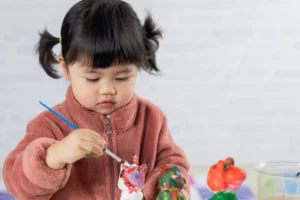The Impact Of Colour On A Child’s Development
![]()
- Posted by abrakadoodle.com.sg
- Categories Early childhood development
- Date 6 March 2023
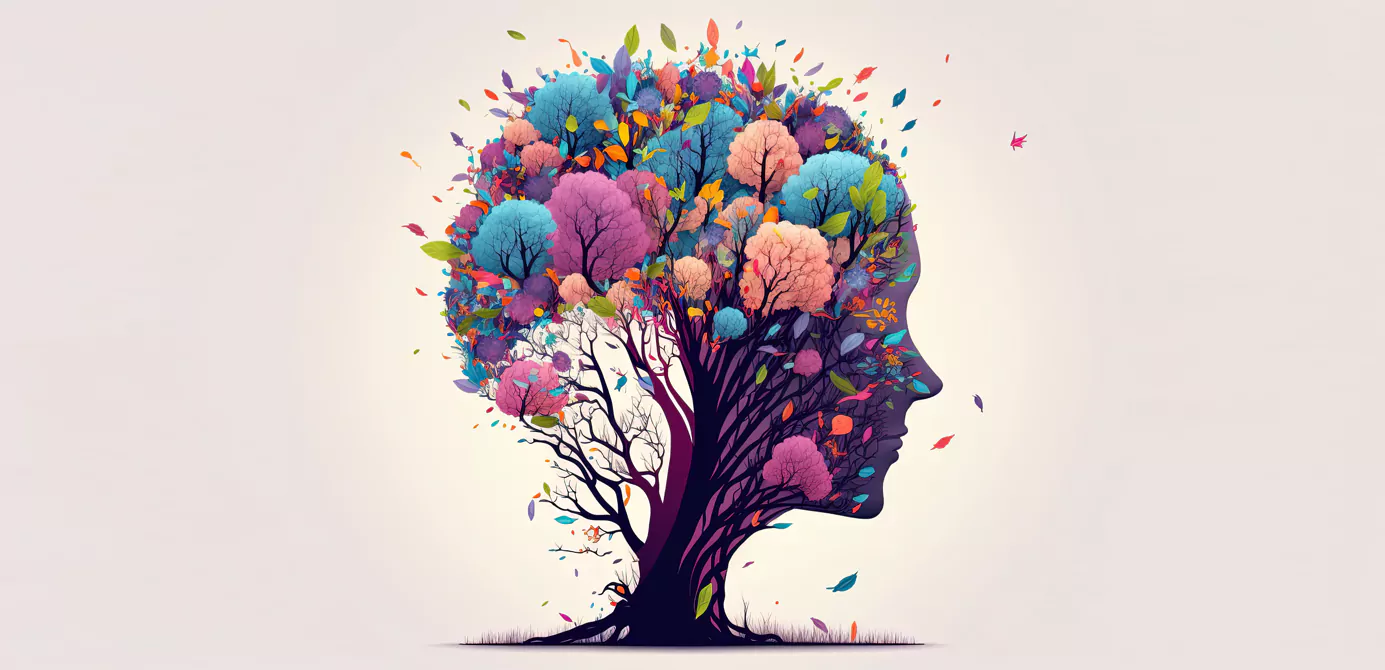
Colour perception in child development is a far more powerful influencing factor than we think. Colour is everywhere. From the colour of our skin to the shades of our clothing and the tint of our walls. In short, colour can change the way a child feels and thinks.
Just like people, colours have stories to tell. And like people, colours are always interacting with one another. Colours influence how we feel and how we process the world.
So how do children feel about colours? Can colour have a profound impact on a child’s development and mental state? As a matter of fact, there is a science of colour that tells us that infants and children relate to the world through colour.
Colour perception in child development also plays a major role in learning and memory, as they can help children to better retain information when colours are used to categorize and organize information.
Table of Contents
ToggleHow colour can impact child development
Mood enhancer
Different colours can affect a child’s behaviour and emotions, for instance, warm colours like red and yellow evoke excitement and energy, while cool colours like blue and green promote calmness and relaxation.Cognitive development
Colours can play a role in cognitive development by helping children to categorize and organize information, which can improve their memory and learning.Social development
Colours can also play a role in social development, as children may form associations between certain colours and social groups, which can impact their perceptions of people and relationships.Cultural influences
Colour perception in child development can be shaped by cultural and personal experiences, which can impact the way they perceive and respond.Colour and the well-being of a child
Colour psychology plays a significant role in the well-being of children. Children are often more sensitive to colour than adults, and different colours can have a profound effect on their emotions, behaviour, and learning.
So it is important to consider the use of the right colours in child’s environments, such as in their bedrooms, playrooms, and study rooms, as this can have a significant impact on their performance and overall well-being.
Before choosing a colour for the interiors, it is best to consider the context and the purpose of the room. For example, in a bedroom, you may want to choose soft and relaxing colours to promote sleep and relaxation, while in a playroom, you may want to choose bright and stimulating colours to encourage play and creativity.
However, as with all aspects of colour psychology, it’s important to keep in mind that every child is unique and may have different responses to different colours. So the right way to begin is to assess your child’s favourite colours and their meaning. You won’t go wrong.
Children, creativity & colour
Whether it’s a child or an adult, the effects of colour on human beings trigger various emotions causing excitement, lending a sense of calmness, giving inspiration, and raising anxiety or stress. Various studies in colour psychology have shown the benefits of colours, especially when it comes to the development of the brain, creativity, productivity, and learning.
Primary colours, such as red, green and blue are especially appealing to young children. For instance, when infants were presented with the full chromatic spectrum they spent more time looking at red and blue than looking at yellow and green.
By exposing children to a variety of colours, you can help them to learn to express themselves in new and imaginative ways. This way, you could also help in the development of their cognitive and motor skills as they learn to identify and distinguish different colours.
Alternatively, enrolling your child in art classes will be a practical way for children to learn more about colour, and how it can enhance their creativity. By exploring different colours, they can experiment with different moods, emotions, and ideas. Additionally, they can also learn how to use colour to convey different messages and emotions through their artworks.
It is important to note that while colour is a valuable tool in helping children develop, please note that every child is unique and may have different responses to different colours. For example, what may evoke feelings of happiness and excitement in one child may evoke feelings of fear or anxiety in another.
Hence, it is advisable to approach colour in a holistic manner and always consider the individual child’s needs and preferences first.
Choosing the right colour for the interiors
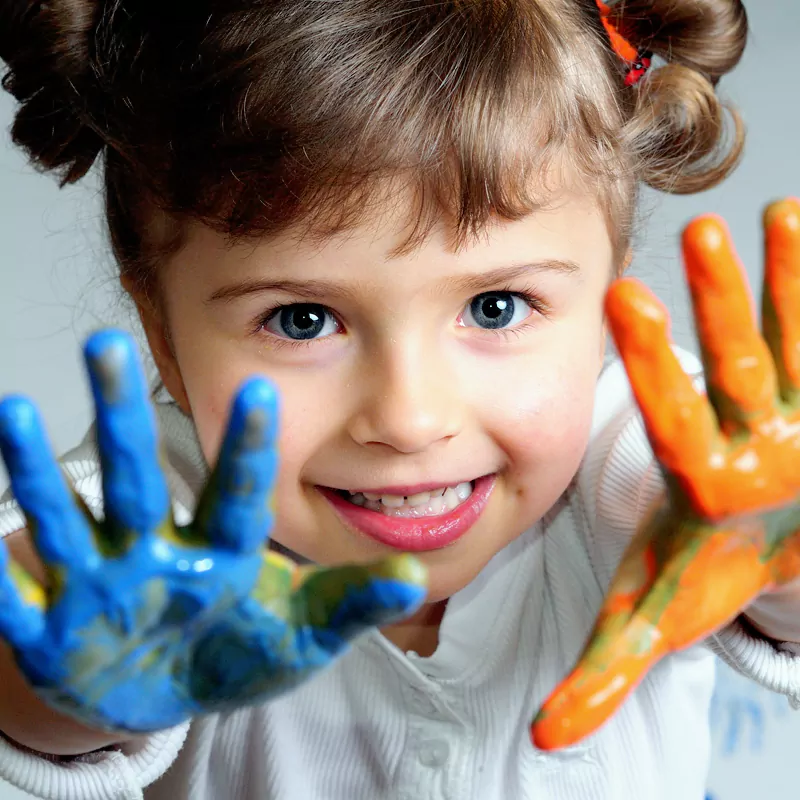
When choosing a colour for the interiors of a home, understanding your child’s favourite colours
and their meaning can be helpful in creating the desired mood and atmosphere. For example, a relaxing bathroom may use cool blues and greens to create a calming environment, while a living room may use warm reds and yellows to create a more energetic and inviting ambience.
It is easy to connect colours to different moods and impressions when you understand colour psychology. But remember, age also affects perception and influences affinity towards a particular colour.
Children, for instance, are more drawn to colours that are bright when they little — red, yellow, green, blue, and pink. Such colours can help in creating a sense of positive energy and playfulness. These colours also radiate happiness.
Once the child starts growing up their colour preferences also change. They are likely to be drawn more towards calming colours like pastels and matte. With this understanding in mind, let’s take a look at colours individually and understand clearly what each of them can signify.
How right is red?
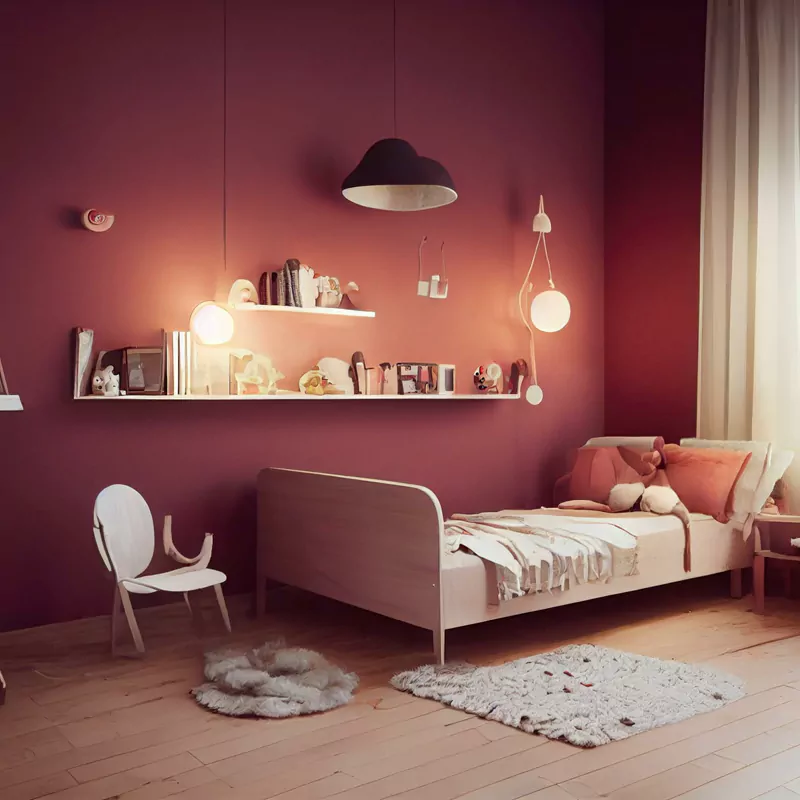
While it is true that red can have a powerful impact on our visual and emotional state, the use of red in a kid’s room need not be completely avoided. It all depends on the intensity and tone of the red colour used, as well as the overall colour scheme of the room.
For example, a soft, muted shade of red can create a cosy and warm atmosphere in a kid’s room, while a brighter, more intense red can have a stimulating effect. The key is to use red in moderation and in combination with other colours that can balance its impact.
Some kids might enjoy a red-themed room, while others might not. Ultimately, the goal is to create a space that is comfortable, safe, and enjoyable for the child.
Yellow is happy
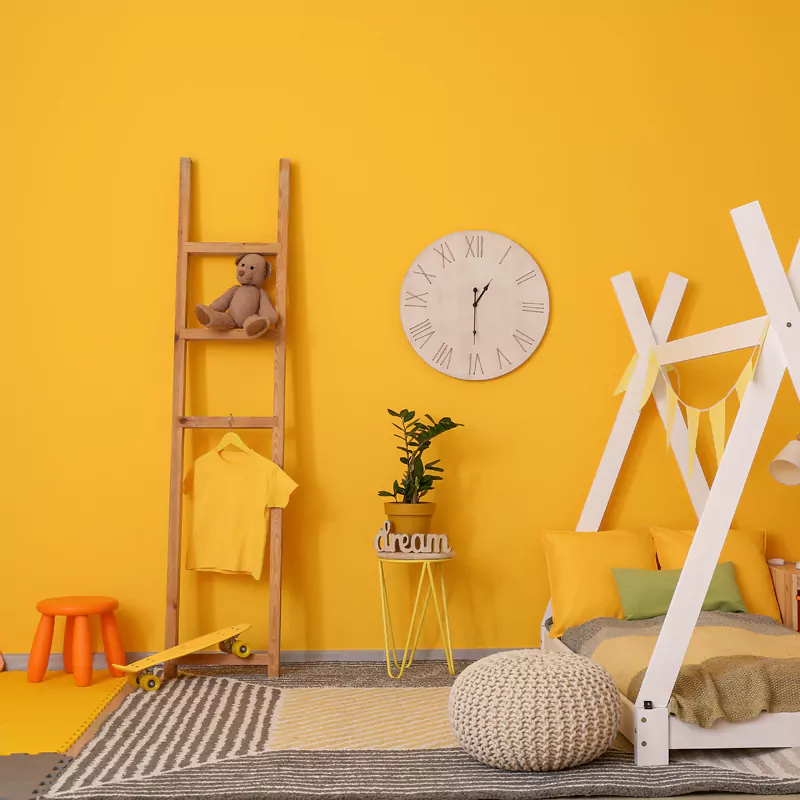
Yellow is often associated with positive emotions like joy, happiness, and optimism. And unlike red, yellow is the most joyful colour for your child’s room. By using yellow you also tend to create an attentive atmosphere that can play a key role in memory stimulation.
Yellow is associated with wisdom, and kindness. It helps in radiating warmth, enthusiasm, fun, and inspiration. Combining yellow with cool colours like blue or green can create a calming and balanced effect in a baby’s room.
The key is to use colours in moderation and to create an environment that is visually pleasing and emotionally supportive for your child.
Blue is cool
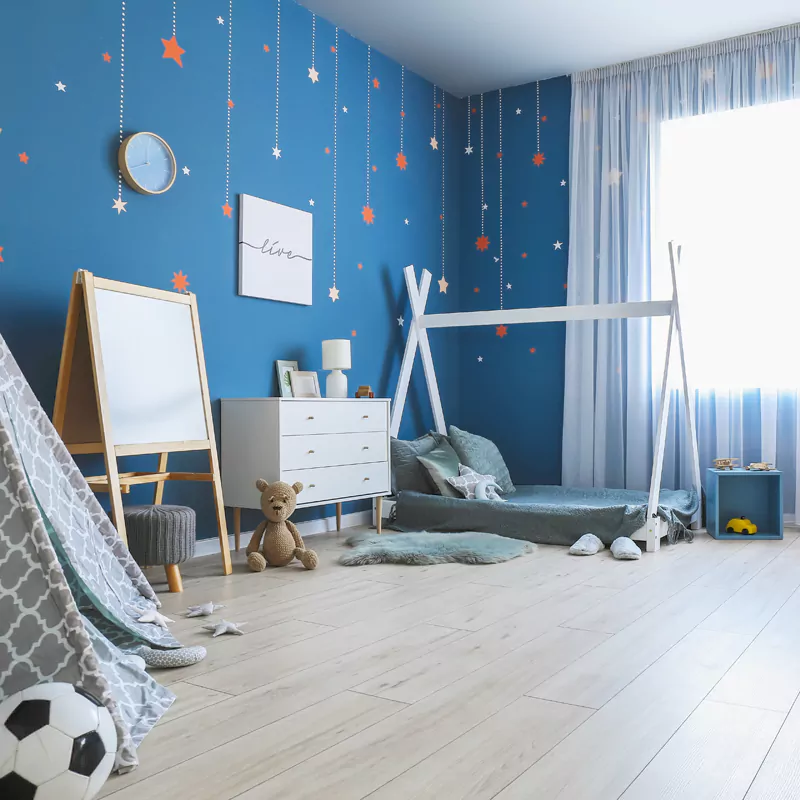
Blue is the complete opposite of the colour red. While blue is transparent, red is seen as more opaque. Blue as a colour is often considered to be calming and serene. It plays a key role in lowering body temperature, blood pressure, and pulse rate.
When used in a child’s bedroom, it can create a peaceful and relaxing environment. The colour blue is also associated with trust, loyalty and stability. Blue also invokes feelings of contentment, spaciousness, and comfort just like the sky and the ocean.
Blue perhaps is the most preferred colour choice for even nurseries as it helps the baby to be at ease and at peace. You can easily use the colour blue in a child’s room who happens to be very active and vibrant all the time. Blue is soothing and will have a calming effect on the child.
Nurturing green
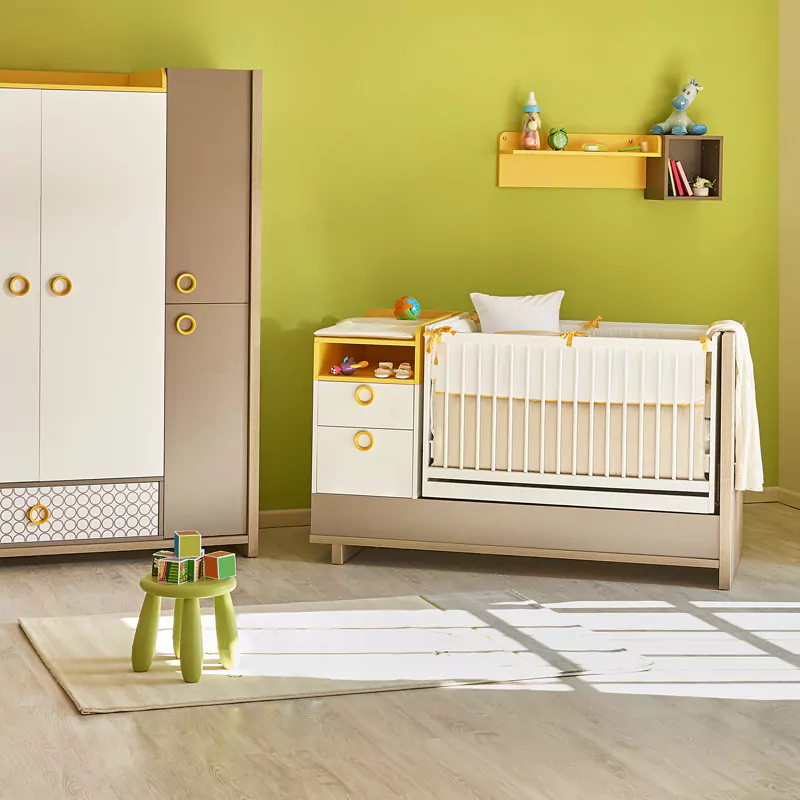
Just like blue, the colour green has a lot of healing and therapeutic properties. The colour represents health and offers a calming and soothing effect on the nervous system. It reduces stress and anxiety levels. It also symbolizes growth, renewal and stability, making it an ideal colour for a child’s bedroom.
By incorporating different shades of green, you can create a warm and inviting environment that promotes peace and comfort. Research has shown that the colour green improves concentration,
reading and comprehension skills in children can be especially beneficial for children studying and doing their homework.
Overall, green is a wonderful colour with the capacity to motivate a child to do better and excel in studies and will also make them calm and stable.
Versatile orange
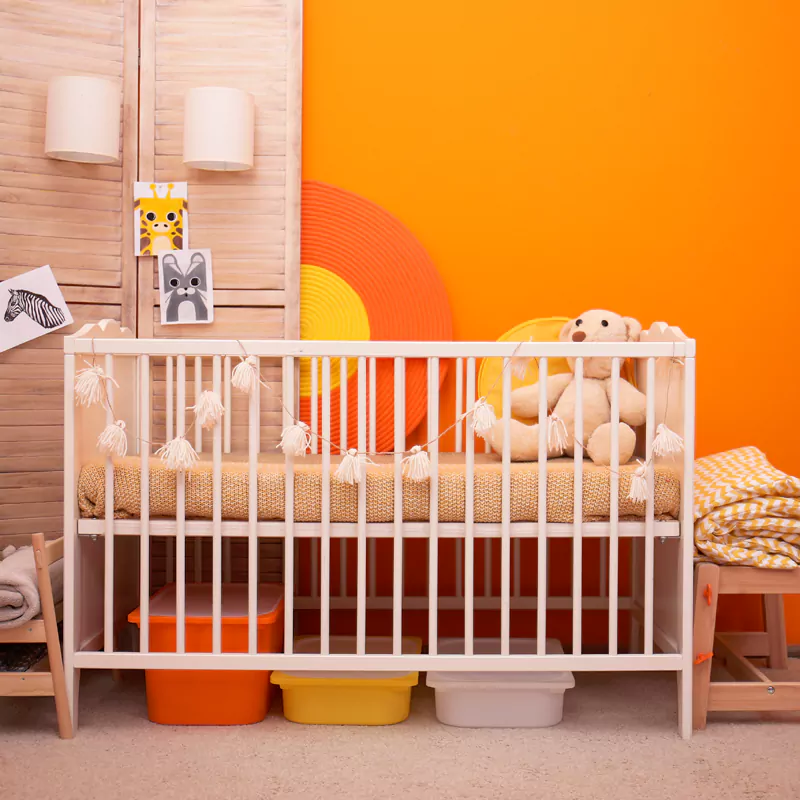
Orange is a versatile colour that evokes a range of emotions and is energizing and comes with uplifting properties. It grabs attention and creates a sense of fun and excitement.
The colour orange can be used to create a warm and inviting space for a child. It is believed to promote restful sleep and positive energy. And when paired with complementary colours, such as blue or green, orange can create a harmonious and balanced ambience.
Additionally, it is believed to help boost self-esteem and confidence. Overall, orange is a versatile and dynamic colour that can have a powerful impact on our moods, emotions, evoking the feelings of happiness, joy and positivity.
Careful with pink
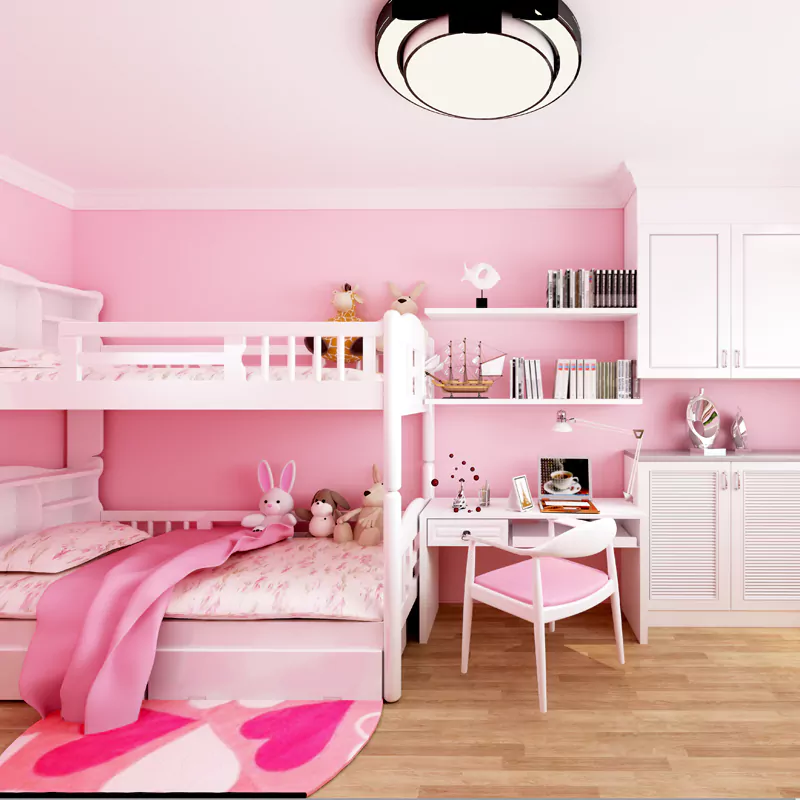
When you mix red with white you get pink. The colour pink has a positive effect on all of us.It is associated with softness, calmness and nurturing making it a good choice for a child’s bedroom.
However, make it a point to use the right shade and intensity of pink, as it can have the opposite effect of what is intended, especially on children who are shy or introverted.
A muted shade of pink in combination with blues, greens and yellows to neutralize the negative effects of pink can work together to create a more dynamic and inviting space.
Purple purpose
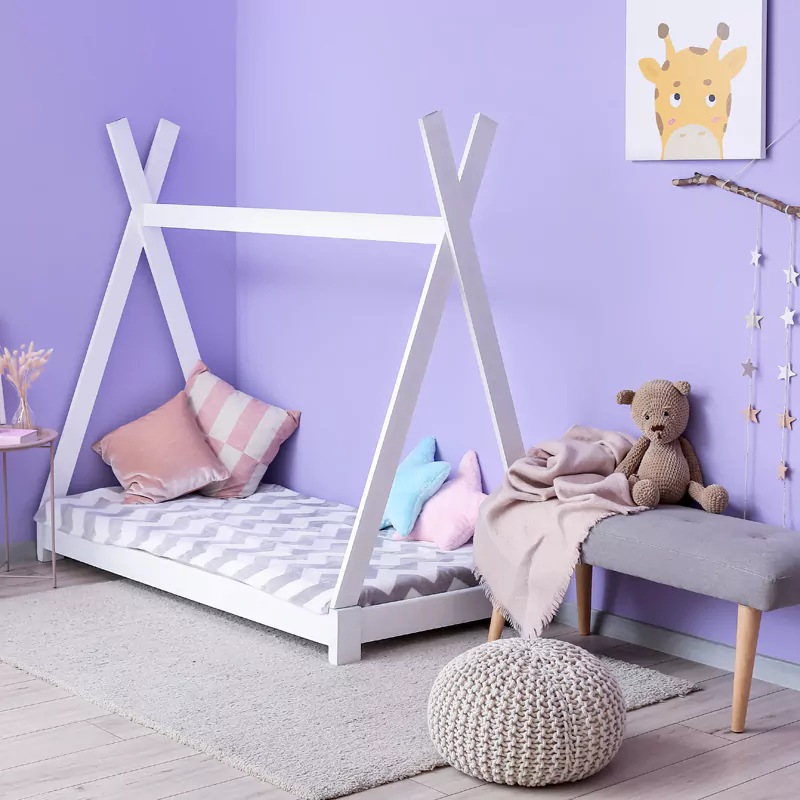
Purple is often associated with creativity, luxury and sophistication and is very popular as a colour of choice for a child’s bedroom. Colour psychology suggests that purple can has a calming effect and is historically linked to spirituality.
What is important, however, is ultimately it is up to you to choose colours for your home based on what you feel and find pleasant, rather than solely relying on anecdotal or unproven claims about their supposed effects on the brain.
About Abrakadoodle
Abrakadoodle is dedicated to supporting children in the early years and building strong foundations to ensure they get the best head start. Process Art learning experiences, for instance, inspire toddlers and young children to think differently, be innovative, and explore new ways to learn about interesting things found in the real world.
Our art lessons also change the way a child discovers and imagines. Igniting her mind to think, play and learn like never before. If you like to enrol your child in our art classes or find out more about why art classes for childhood development is important, give Abrakadoodle a call. Or better still, make an appointment with the head of a centre near you.
You will get hands-on exposure to an experience that will make you see colours in a way that adds value to your child’s life.
Please note: Abrakadoodle classrooms are thoroughly sanitized every day — the tables, the chairs, the children’s activity stations and everything else the child might touch is made safe and clean. They also wear a mask, wash their hands frequently, and practice social distancing.
Frequently Asked Questions
- Moods and emotions, such as sadness or anger, hunger or loneliness, happiness or boredom, can be affected by colors.
- The ability to learn new tasks and retain information, as well as levels of attention and focus, can also be impacted by colors.
- Colors can change the way we think about ourselves and others.
- Each color signifies a specific element. For instance, the color orange is associated with energy and enthusiasm, while red is usually associated with warmth, passion, and love.
Yes, color preferences do change as a child grows older. Although, there are many factors that play into the development of a child's color preferences. For example, if your child has always preferred blue clothes and toys, they might start to prefer red clothing or toys when they're a little older. This could be because they've started to associate blue with being cool or popular—or maybe because they have developed a preference for red based on their experiences and social interactions.
Some of the best colors for child development include:
- Blue: Calming, relaxing, and can improve concentration
- Green: Soothing, refreshing, and can promote a sense of balance and harmony
- Yellow: Cheerful, energizing, and can stimulate the mind and enhance memory
- Orange: Enthusiastic, energetic, and can inspire creativity and confidence
- Purple: Inspiring, imaginative, and can encourage creativity and emotional balance
By choosing these colors for your child's environment, you can help promote positive development in various areas, such as focus, creativity, and emotional well-being.
You may also like
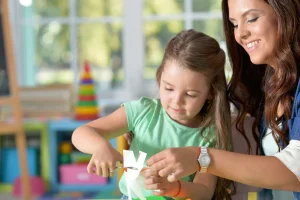
How Collage-making Activity Helps A Child To Think Creatively
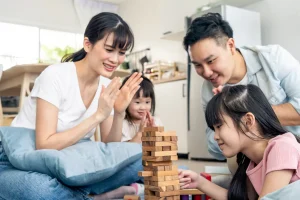
How “STEAM” Activities Give A Head Start To Your Toddler
